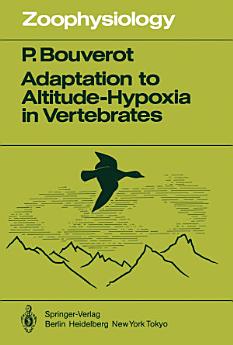Adaptation to Altitude-Hypoxia in Vertebrates
P. Bouverot
ທ.ວ. 2012 · Zoophysiology ຫົວທີ 16 · Springer Science & Business Media
ປຶ້ມອີບຸກ
176
ໜ້າ
reportບໍ່ໄດ້ຢັ້ງຢືນການຈັດອັນດັບ ແລະ ຄຳຕິຊົມ ສຶກສາເພີ່ມເຕີມ
ກ່ຽວກັບປຶ້ມ e-book ນີ້
Adaptation to altitude hypoxia is characterized by a variety offunctional changes which collectively facilitate oxygen trans port from the ambient medium to the cells of the body. All of these changes can be seen at one time or another in the course of hypoxic exposure. Yet, as already stressed (Hannon and Vogel, 1977), an examination of the literature gives only a sketchy and often conflicting picture of the exact nature of these changes and how they interact as a function of exposure duration. This is partly because of the limited number of variables explored in a given study, but it is also attributable to differences in experimental design, differences among species in susceptibility to hypoxia, nonstandardized experimental conditions, lack of proper control of physical (e. g. , temperature) and physiological variables (e. g. , body mass), failure to take measurements at key periods of exposure, and gaps in knowledge about some fundamental mechanisms. Furthermore the available data on animals native to high altitude are meager and/or inconclusive. Extensive further work under well-controlled experimental conditions is required before a detailed picture can be made. Nevertheless, it has been a guiding principle in the prepara tion of this monograph rather to summarize the vastly dis persed material that constitutes the comparative physiology of adaptation to high altitude into a coherent picture, than to provide a comprehensive survey of the field.
ໃຫ້ຄະແນນ e-book ນີ້
ບອກພວກເຮົາວ່າທ່ານຄິດແນວໃດ.
ອ່ານຂໍ້ມູນຂ່າວສານ
ສະມາດໂຟນ ແລະ ແທັບເລັດ
ຕິດຕັ້ງ ແອັບ Google Play Books ສຳລັບ Android ແລະ iPad/iPhone. ມັນຊິ້ງຂໍ້ມູນໂດຍອັດຕະໂນມັດກັບບັນຊີຂອງທ່ານ ແລະ ອະນຸຍາດໃຫ້ທ່ານອ່ານທາງອອນລາຍ ຫຼື ແບບອອບລາຍໄດ້ ບໍ່ວ່າທ່ານຈະຢູ່ໃສ.
ແລັບທັອບ ແລະ ຄອມພິວເຕີ
ທ່ານສາມາດຟັງປຶ້ມສຽງທີ່ຊື້ໃນ Google Play ໂດຍໃຊ້ໂປຣແກຣມທ່ອງເວັບຂອງຄອມພິວເຕີຂອງທ່ານໄດ້.
eReaders ແລະອຸປະກອນອື່ນໆ
ເພື່ອອ່ານໃນອຸປະກອນ e-ink ເຊັ່ນ: Kobo eReader, ທ່ານຈຳເປັນຕ້ອງດາວໂຫຼດໄຟລ໌ ແລະ ໂອນຍ້າຍມັນໄປໃສ່ອຸປະກອນຂອງທ່ານກ່ອນ. ປະຕິບັດຕາມຄຳແນະນຳລະອຽດຂອງ ສູນຊ່ວຍເຫຼືອ ເພື່ອໂອນຍ້າຍໄຟລ໌ໄໃສ່ eReader ທີ່ຮອງຮັບ.







